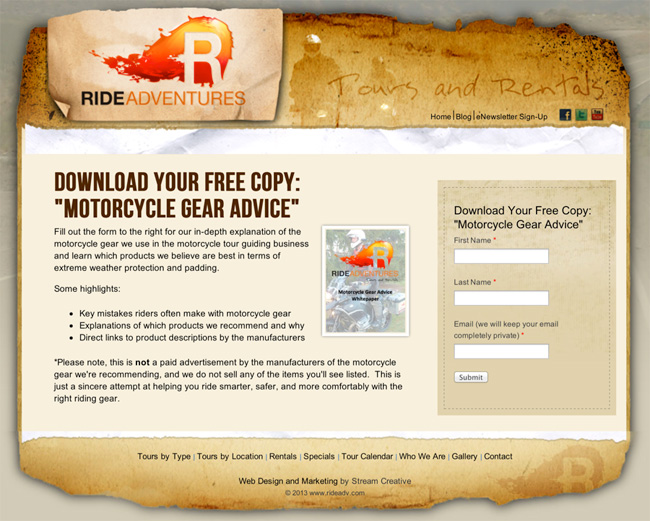 Mazda car company decided to forgo its popular “zoom zoom” advertising campaign this year in favor of an ad that tells a great story. And it isn’t even a story about Mazda. It portrays Dick Fosbury who revolutionized the high jump by soaring over the bar backward. Fosbury and other “game changers” portray Mazda’s idea behind “developing new and different ways to build outstanding vehicles.” The ad goes beyond the what to the "why.”
Mazda car company decided to forgo its popular “zoom zoom” advertising campaign this year in favor of an ad that tells a great story. And it isn’t even a story about Mazda. It portrays Dick Fosbury who revolutionized the high jump by soaring over the bar backward. Fosbury and other “game changers” portray Mazda’s idea behind “developing new and different ways to build outstanding vehicles.” The ad goes beyond the what to the "why.”
By reaching buyers on a human and emotional level, this simple, 30-second commercial has made the case for storytelling in advertising, marketing and content development.
Let’s take a look at a few other elements that make the case for storytelling.
According to Psychology Today, the influential role of consumer behavior has been proven again and again:
- fMRI neuro-imagery shows that, when evaluating brands, consumers primarily use emotions (personal feelings and experiences) rather than information (brand attributes, features and facts).
- Advertising research reveals emotional response to an ad has far greater influence on a consumer’s reported intent to buy a product than does the ad’s content—by a factor of 3-to-1 for television commercials and 2-to-1 for print ads.
- Research conducted by the Advertising Research Foundation concluded the emotion of “likeability” is the measure most predictive of whether an advertisement will increase a brand’s sales.
- Studies show that positive emotions toward a brand have far greater influence on consumer loyalty than trust and other judgments, which are based on a brand’s attributes.
In a less formal study, a marketing researcher decided to have each of the students in her class give a 1-minute pitch. Only one in 10 students used a story within his or her pitch. The others stuck to more traditional pitch elements: facts and figures. The woman then asked the class to write down everything they remembered regarding each pitch. Only 5 percent of students cited a statistic, but a whopping 63 percent remembered the story.
However, no one says facts and figures should be completely eliminated from your storytelling. In fact, weaving the two together can have an even greater effect on your buyers. “Studies show that we are wired to remember stories much more than data, facts and figures,” explains Jennifer Aaker, professor of marketing at the Stanford Graduate School of Business. “However, when data and story are used together, audiences are moved both emotionally and intellectually.”
Now you know storytelling is good for your bottom line. But how do you implement it? Marketers are not traditionally skilled in writing prose. Well the truth is, storytelling can be broken down into three acts, each one ultimately leading your buyers down the rabbit hole. To learn more, download the free guide, “Storytelling: How to Acquire Leads in 3 Acts.”
With a degree in journalism, Brianne Carlon has more than seven years of professional writing and content marketing experience. Through web and editorial writing, she reaches target audiences for Fortune 1000 companies, as well as small businesses. She uses her content marketing powers to help Kuno and its clients build their brands. You can connect with her on Twitter, LinkedIn and Google+.
photo credit: Scottish Libraries



 Wait a minute...they already have. They teamed up with the programmers, some MBAs and a couple artist types and created an innovative discipline called "content marketing."
Wait a minute...they already have. They teamed up with the programmers, some MBAs and a couple artist types and created an innovative discipline called "content marketing." Workers of the world unite!
Workers of the world unite! But there's real power in digital marketing even (or perhaps especially) for industries that may be constrained by self-limiting beliefs.
But there's real power in digital marketing even (or perhaps especially) for industries that may be constrained by self-limiting beliefs. With a degree in journalism, Brianne has more than six years of professional writing and content marketing experience. Through web and editorial writing, she reaches target audiences for Fortune 1000 companies, as well as small businesses.
With a degree in journalism, Brianne has more than six years of professional writing and content marketing experience. Through web and editorial writing, she reaches target audiences for Fortune 1000 companies, as well as small businesses. 


 About the author: Shannon Fuldauer has a B2B and B2C eCommerce Marketing background including roles as Vice President of Marketing & Sales Support, and subsequently Vice President of Public Relations & SEO Services, for CareerBoard.com. She has expertise in digital marketing and advanced email communications and is a senior consultant with Kuno Creative.
About the author: Shannon Fuldauer has a B2B and B2C eCommerce Marketing background including roles as Vice President of Marketing & Sales Support, and subsequently Vice President of Public Relations & SEO Services, for CareerBoard.com. She has expertise in digital marketing and advanced email communications and is a senior consultant with Kuno Creative. We all know the benefits of writing at least five blog posts per week (
We all know the benefits of writing at least five blog posts per week ( About the Author: With over 30 years of business and marketing experience, John McTigue loves to blog about ideas and trends that challenge inbound marketers and sales and marketing executives. John has a unique way of blending truth with sarcasm and passion with wit. You can connect with John via
About the Author: With over 30 years of business and marketing experience, John McTigue loves to blog about ideas and trends that challenge inbound marketers and sales and marketing executives. John has a unique way of blending truth with sarcasm and passion with wit. You can connect with John via 